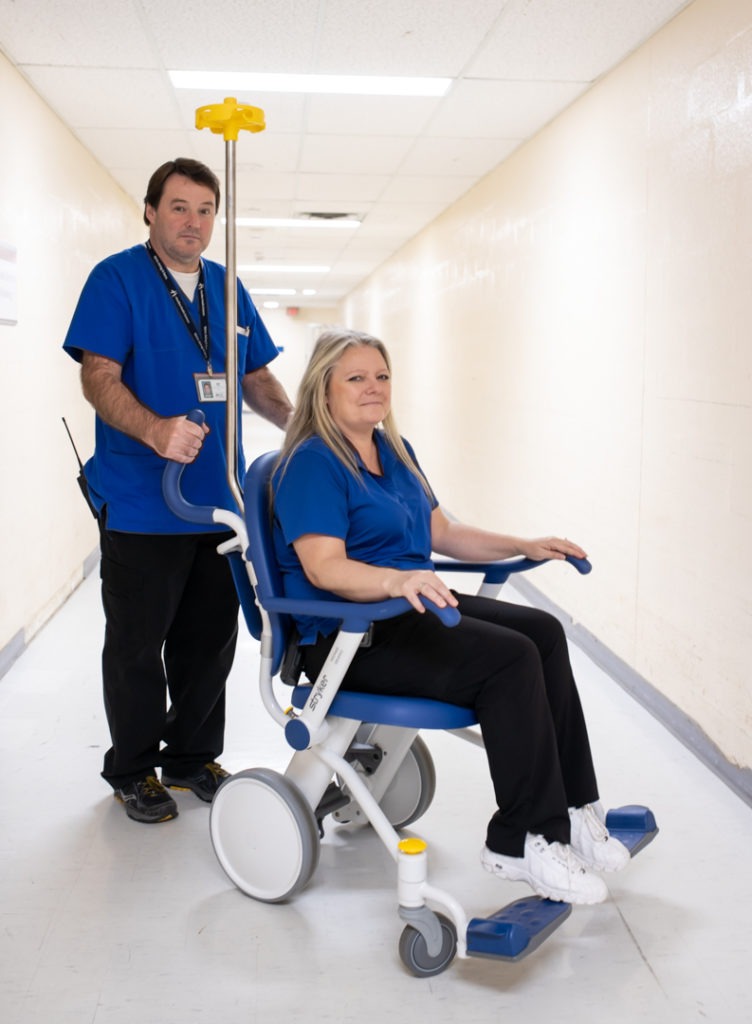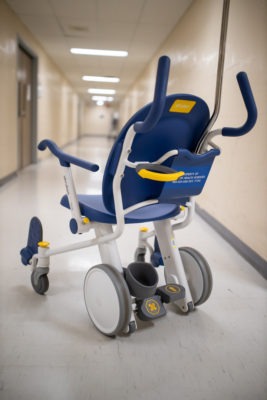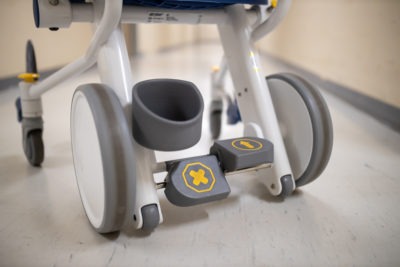
New patient transport chairs position HHS as leader in innovation
You may start to notice some sleek new patient transport chairs around our hospitals. Our very own hospital staff had a hand in designing them.
Nearly a decade ago, Stryker, one of the world’s leading medical technology companies, consulted with Hamilton Health Sciences on the feedback and design of these innovative chairs. Now, we are using them in our hospitals, and they are making everyone’s lives a little easier.
David Young, Sales Excellence and Operations Manager at Stryker, remembers the collaborative design process well. “There was a problem with the current chairs from an ergonomic and patient safety perspective, including ease of movement,” he says. “We took all of that into consideration in the design process.”
A Better Patient Experience
The new patient transport chairs are an important part of HHS’ fleet of equipment. Porters use them to bring patients to different parts of the hospital, and they are almost constantly in action. Moreover, the new chairs are ergonomically friendly, easy to clean and use, comfortable for patients, and built to last.
“Our porters love them, they make their lives easier”
Anita Lamond, director of corporate services at HHS adds, “Our porters love them. They make their lives easier.” This translates to a better experience for our patients being transported by porter staff around our sites. The new chairs are also available at key entrance locations for patients and their caregivers to use if they need a transport chair to get them to their destination.

Exciting New Features
Holance Chan, an ergonomist at HHS, says the new patient transport chairs feature many unique benefits, some of which were designed based on feedback from HHS staff:
- Wheel design: larger wheels mean less force required to propel the chair
- Handle design: support a neutral wrist posture which makes pushing easier
- Arm rests: drop away to the back of the chair which makes it easier to access patients
- Sections for storage: IV pole, file holder, and storage for oxygen tanks
- Pedal design: wheel lock is activated by two foot pedals
- Weight capacity: can hold up to 500 pounds compared to basic chairs which hold 300-350 lbs.
- Storage: chairs are nestable to maximize our space

Holance describes the advantages of collaborating in the design process, “having the opportunity to provide feedback on product design and selection is great because you can control the risk factors at the source.” Getting out in the field is significant as “our staff know firsthand what works for them and our patients and they’re able to share that valuable perspective,” he explains.
“Not only are they a great partner as an innovative organization, they are right in our backyard”
Hamilton Health Sciences provides feedback and input on other products as well, both with Stryker and other medical companies. As a world-leading teaching hospital built on evidence-based practices, our input is sought by corporations who want to make sure their products measure up to a very high standard. “Hamilton Health Sciences is part of our global voice of customer design,” says David. “Not only are they a great partner as an innovative organization, they are right in our backyard.”
